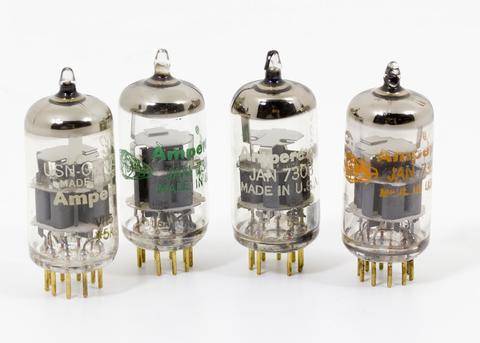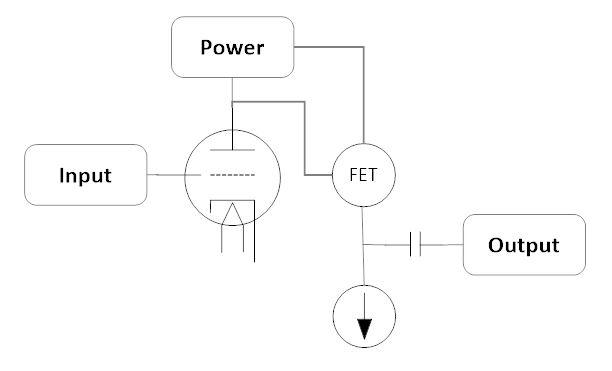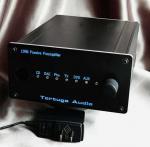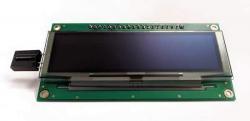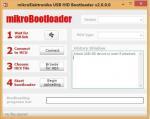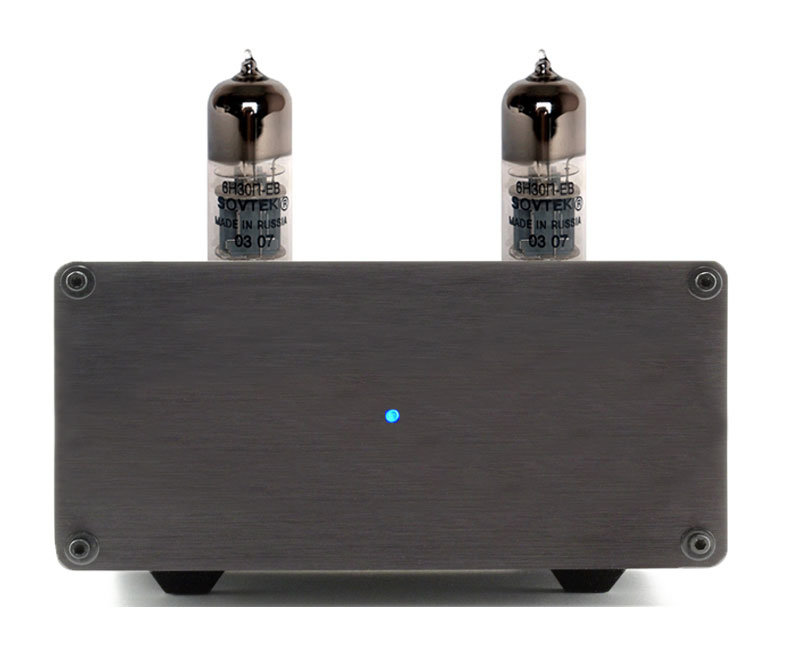Tube Rolling The Tortuga Tube Buffer
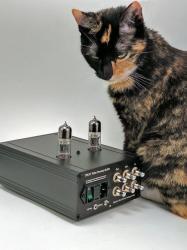 Designed around the excellent current production 6H30 tube, we’ve concluded that the TPB.V1 Tube Buffer is also compatible with the entire family of 9-pin 6DJ8 / ECC88 / 6922 / 7308 tubes which opens up a big wide world of tube rolling possibilities.
Designed around the excellent current production 6H30 tube, we’ve concluded that the TPB.V1 Tube Buffer is also compatible with the entire family of 9-pin 6DJ8 / ECC88 / 6922 / 7308 tubes which opens up a big wide world of tube rolling possibilities.
And while the 6H30 is a great sounding tube for the Tortuga buffer, I’m already convinced that some of these alternative tubes will yield sonic improvements.
This article discusses certain aspects of tube compatibility and why tubes that are otherwise thought as being incompatible with the 6H30 are indeed interchangeable in this specific buffer application.
Tube Compatibility
The table below compares the key tube characaterstics of heater current and amplification factor for the 6H30 and the 6Dj8 family of 9-pin tubes.
| Tube | nominal heater current ma @ 6.3 V | amplification factor (Mu) |
|---|---|---|
| 6H30 | 850 | 15.2-16.3 |
| ECC88/E88CC/6DJ8/6922/7308 | ~365 | 28-33 |
Tube afficionados will note that the 6H30 is most definitely not a drop in substitue for any of those other tubes. Replacing a 6922 with a 6H30 will almost certainly overload that device’s heater power supply since the 6H30 requires 2.3 times higher heater current than the 6922 and its siblings.
On the flip side, the reduced heater current from dropping a 6922 into the buffer designed around the 6H30 poses no problems for our buffer’s higher capacity regulated DC heater power supply. Heater power supply is typically a key constraint in using alternative tubes. Fortunately this is not the case with our TPB.V1 buffer.
No Amplification
A key characteristic of all tubes is their ability to amplify voltage. A tube’s amplification factor is defined as the ratio of change in output voltage per change in input voltage (at a given plate power supply voltage and current). This amplification factor is referred to as the a tube’s “mu”.
But lets remind ourselves that the TPB.V1 is a buffer with a default gain of 1x. A gain of 1x, or unity gain, means literally zero amplification from the tube in this application. True, the user can opt to increase the buffer’s gain by +3 dB (gain of 1.4x) or +6 dB (gain of 2x) but these are very modest gains for a typical tube aplication.
The key takeaway here is that a tube’s amplification factor (inherent gain) matters very little to the overall performance of a given tube in a zero/low amplication buffer application.
So why use a tube here at all? To capture the sonic euphonics that only tubes can provide…of course!
Low Voltage Operation
An interesting consequence of zero/low amplification is that we don’t have to power the tube plate (anode) with the high voltage (100-200 volts or more) that is typical of most tube applications. In fact, the Tortuga tube buffer operates with a plate power supply of only 30 volts.
Ideally, tubes must operate over a largely linear range of their performance curves in order to minimize distortion. With zero/low amplification most tubes do in fact remain very linear even down at very low plate voltages while operating with input signal grid voltages (Vg) near zero volts. This is evident in the performance curves shown below for both the 6H30 tube and the 6DJ8 family of tubes and is borne out in practice.
The advantages of low voltage operation include:
- Ultra low-noise power supply (Belleson SuperRegulator)
- Direct coupled signal input to grid without coupling caps or voltage offset
- Immunity from tube microphonics (tube acting as a microphone)
- Less heat/thermal stress (longer tube life)
- Compatibility with a wider range of tubes (enabling tube rolling!)
Tube Rolling – Results Please
I’m far from exhausting the possibilities having personally only tried a pair of new Genelex Gold Lion E88CC that I picked up from TubeDepot.com for $46 each.
While neither cheap nor vintage NOS tubes, I found these new Genelex E88CC’s to be a surprising alternative to the original 6H30’s. In fact it took only a few minutes of listening and some back and forth tube rolling to convince myself that I preferred these E88CC’s over the stock 6H30’s. They have a very smooth and natural sound with beautiful midrange and highs and plenty of satisfying bottom end.
A customer who had a pair of 1950’s NOS E88’s sitting on the shelf reported similar impressions after swapping out his 6H30’s.
I have a very nice single NOS French Mazda 7308 that I picked up a few years ago for $250 that I’m tempted to find a mate for.
Laissez les bons temps rouler!
Considering a tube buffer? Check out this companion article: Is A Tube Buffer Right For You?
